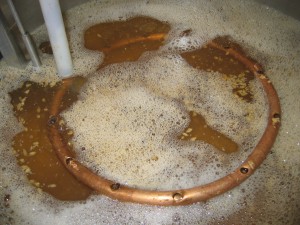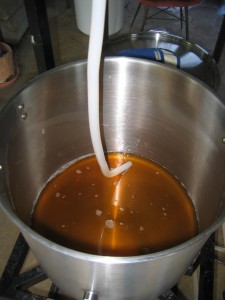Fly sparging can be made less complicated, and less wasteful of water, than the way it is presented by some homebrew books, magazines, or websites. This is a description of “my” way of continuous sparging. It’s “my way” in the sense that this is how I do it, not that I was the first or only person to consider it. I call it pulsed sparging, but some commercial breweries do this as their method of continuous sparging and don’t have a special name for it. [Read more…]
The Easy Way to Fly Sparge (Part 1 of 3)
When I started brewing, continuous sparging (sometimes called fly sparging) was the only method for sparging a grain bed described on the homebrewing literature. Later, some homebrewers adopted batch sparging as their method of choice, and still later some homebrewers started using brew-in-a-bag methods.
A variety of criticisms have been lodged against fly sparging. I have an easy method of fly sparging that answers some of these criticisms — and the remaining ones are minor, in my opinion. (I’m convinced fly sparging is the best of the homebrew lautering methods, and I’ll explain why in a separate article. But for today, here’s the start of a “how to” article.) [Read more…]
Lautering and the Length of Your Brewday
In the previous article, I discussed when you can safely stop mashing and proceed to the mash out and recirculation steps. Heading to the next step when an iodine test indicates that the mash is converted can frequently save you at least 20 minutes out of the usual 60-minute mash time specified in most homebrew recipes. Today I present another way to save time in your all-grain brew day — pick a lautering method that makes sense given how quickly you can heat your wort.
Lautering
Lautering is the step in all-grain brewing in which the brewer separates the sweet wort from the spent grains. Most forms of lautering involve sparging — rinsing the grain bed with hot water. This extracts sugars from the grains that did not freely drain along with the first wort. (The first wort comprises all the runnings from the lauter tun that are undiluted with sparge water.)



Recent Comments